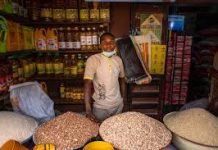It added that April’s increase was driven by palm oil prices and in a minor key, cereals, while sugar prices tapered down after a strong increase in March.
The FAO Food Prices Index, averaged 151.8 points in April, and 0.7 per cent increase from March.
The organization said that it is about 10 per cent below its level of a year ago and more than a third of its 2011 highs. The gradual increase, it added, is far from even across the board.
It stated that the trade-weighted index tracks international market prices for five key commodity groups: major cereals, vegetable oils, dairy, meat and sugar.
Its decline over the past year, it added, reflects ample food supplies, a slowing global economy and a stronger U.S. dollar.
It said Vegetable oil prices rose 4.1 per cent, due largely to a grim 2016 production outlook for palm oil coupled with a growing worldwide demand.
Cereal prices, it added, rose 1.5 per cent on the month, due primarily to international maize quotations, themselves influenced by a weaker U.S. dollar and spill over from the oil seeds complex.
However, it said, rice prices declined marginally, while wheat markets posted limited gains amid expectations of large supplies in the new season for the crop.
It added that diary prices dropped 2.2 per cent as stocks of butter and cheese in major exporters continued to grow.
FAO said meat prices rose 0.8 per cent, pushed up by strengthening United States demand for Australian beef. It said sugar prices, meanwhile, dropped 1.7 per cent in April after a dramatic 17 per cent increase the previous month.
It said while concerns about global sugar production remain, Brazil, by far the main exporter, has had its second-highest crop ever and the country’s use of sugarcane for ethanol is expected to decline. Sugar and vegetable oils are the only sub-indexes currently at levels higher than those of April 2015.













